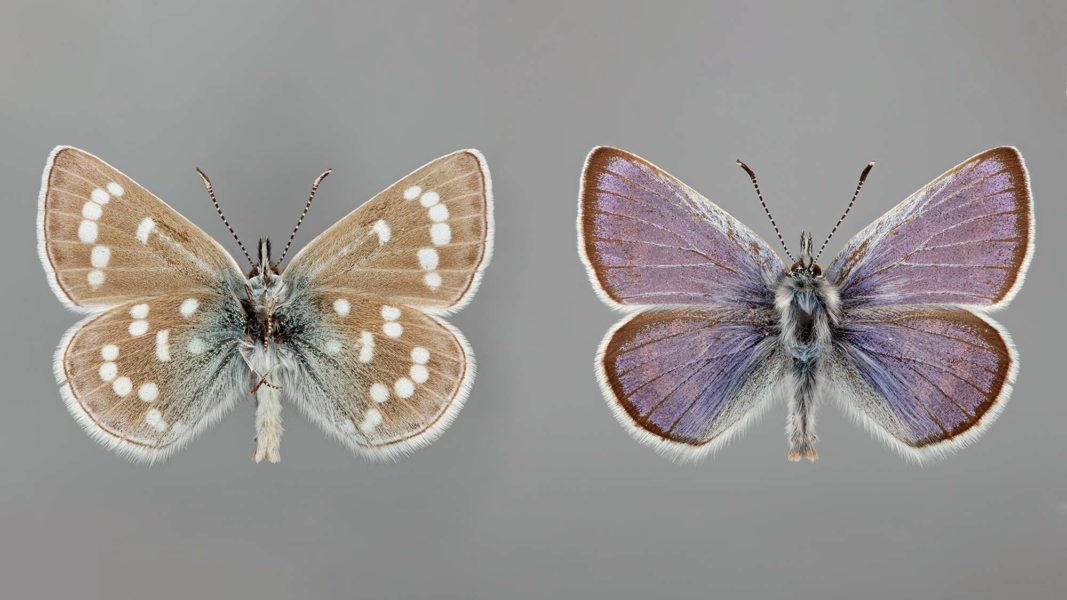This photograph by Roger Vila, a researcher from the Institute of Evolutionary Biology (IBE: CSIC-UPF), is of a specimen of Glaucopsyche alexis, the closest European relative to the Xerces Blue butterfly (Glaucopsyche xerces) – a butterfly that no longer exists
The Xerces Blue was the first butterfly to go extinct in historical times. It was native to the coastal dunes of San Francisco, but the destruction of its habitat and human actions led to its extinction.
Now, researchers from the IBE and the Museum of Natural Sciences of Barcelona (MCNB) have successfully sequenced the complete genome of this extinct butterfly. The teams, led by Carles Lalueza-Fox and Roger Vila, with the participation of Tomás Marqués-Bonet, have managed to sequence the genomes of 4 Xerces Blue butterflies (Glaucopsyche xerces) and 7 specimens of Silvery Blue (Glaucopsyche lygdamus), its closest living relative. The specimens, between eighty and one hundred years old, were obtained from the Smithsonian Institution in Washington.

The study revealed that the genome of Xerces Blue showed signs of inbreeding and population decline. The research team also found that the butterfly experienced a demographic decline over thousands of years, possibly due to climate changes. However, human destruction of its habitat was the decisive factor leading to its extinction.
The genomic traits discovered could help identify other threatened insect species and prevent the extinction of other endangered insects, whose populations might be challenging to assess through traditional census methods
Indeed, the complete genomic information of the Xerces Blue butterfly is an essential step towards its potential de-extinction using genetic engineering techniques like CRISPR. This could have a positive impact on the scientific community and the conservation of pollinating insects.
Toni de-Dios 1,2+, Claudia Fontsere 1,3+, Pere Renom 1+, Josefin Stiller 3, Laia Llovera1, Marcela Uliano-Silva4, Alejandro Sánchez-Gracia5, Charlotte Wright4, Esther Lizano 1,6, Berta Caballero7, Arcadi Navarro 1,8, Sergi Civit 9, Robert K. Robbins10, Mark Blaxter4, Tomàs Marquès-Bonet 1,6,8,11*, Roger Vila 1*, Carles Lalueza-Fox 1,7* Whole-genomes from the extinct Xerces Blue butterfly can help identify declining insect species. eLife. 2023. DOI: https://doi.org/10.1101/2021.11.08.467457






